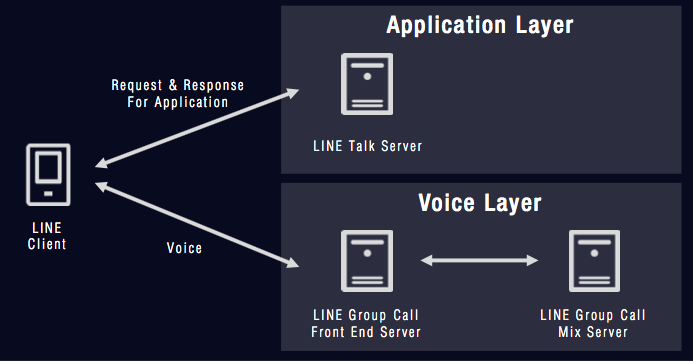
Conference calls over landline phones: so 2000s. Image credit: Bustle.
In the past, contacting someone overseas would require us to pay a hefty price, while talking to multiple clients through a single call was once deemed impossible. Voice over Internet Protocol (VoIP), a way to transmit voice or multimedia data over the internet, paved the way for a convenient, efficient, and cost-effective way of communicating.
The constant development of wireless and wired network infrastructure over the past few years has propelled the growth of VoIP. The rising demand for cheaper means of communication has led to its enormous success.
If you’re in the market for a new VoIP service, this is what you should be looking for.
Affordability and accessibility
Employees of startups and call centers have greatly benefited from this innovation. They can now work remotely while remaining accountable. But even outside of work, we’ve traded traditional phone services for VoIP tools. VoIP subscribership around the world is expected to hit 348.5 million by 2020.
One key attribute to look out for in a VoIP tool should be affordability. Users should be charged lower fees – or none at all in most applications – because the technology is built on existing internet connections. Users only pay for the data used, which means that VoIP providers have an interest in keeping data use as minimal as possible.
In fact, using a VoIP tool means that we can avoid extra charges like phone systems, hardware and setup fees, maintenance and service charges, and upgrade costs, which are common in traditional phone systems.
“Three key factors for comfortable calls are: reliable and quick call connection, delivery of voice in real time without choppiness, and no abrupt call cut-offs,” says Snow Kwon, head of Line VoIP services.
Moreover, the VoIP tools should be readily accessed using mobile phones and tablets. Aside from voice calls, the technology also gives users the power to send voicemail, recording, and SMSes, which expands the overall customer experience. Instead of asking for someone’s phone number, we can just ask them for their username to contact them at no cost.
On top of affordability and accessibility, there are more factors. Line believes that the three key factors for comfortable calls are: reliable and quick call connection, delivery of voice in real time without choppiness, and no abrupt call cut-offs.
Strong connectivity in countries with poor internet penetration
Internet penetration is low in some parts of Asia, such as only 50.4 percent in Indonesia and 20.1 percent in Myanmar. Poor connection is still an issue that needs fixing. But that’s not something consumers or businesses can control. Thus, VoIP tools need to work around poor infrastructure to ensure they provide optimum service.
To provide the highest quality calls regardless of where the call is made, Line utilizes servers in various data centers in different regions. To avoid server overload, Line servers are divided into the application and video or call layers. The app maintains voice call quality by connecting clients to the nearest region’s frontend server.

There are two different layers for the application and the voice. This also helps to deal with connections from a variety of geographies. Image credit: Line.
VoIP tools need to work around poor infrastructure to ensure they provide optimum service to customers.
“The user’s network status changes continuously. Sometimes it is fast, sometimes it is slow, or even worse, the data connection is lost completely. You may think of it as the size of the pipe, for instance. If the pipe is wide enough, the data passes smoothly, but if it is not it may get stuck in the middle,” says Snow. When data is lost, users might hear distorted sounds.
To deal with that, they’ve developed an optimized communication protocol for unstable networks. “If the network pipe becomes smaller, Line adjusts the size of the data small enough to smoothly pass through, and if the pipe is wide enough, Line adjusts the size accordingly. Through this on-call adjustment and operation, Line can provide more stable calls between users,” explains Snow.
Line also optimizes solutions to overcome for different networks and run field tests periodically, particularly in Indonesia. Line’s engineers also created an automatic testing system to monitor and improve the call quality in Indonesia and other countries in real time. This automatic system makes test calls periodically between both iOS and Android devices, and evaluates the quality of calls.

Image credit: Pexels.
Sound management in conference calls
Organizing a call conference with numerous people is now attainable. Line allows its users to make video calls with up to 200 people. Line uses a centralized server for clients, which minimizes the traffic and make the large-scale voice calls possible.
There will be more noise as technology allows more people to join the call. These are unwanted sounds coming from multiple environments or echoes from a single user’s device. These distractions are fatal to any voice or video call conversation – especially as more and more people get onboard the call. A good VoIP tool solves noise and echo issues so that we can hear what is being said.
Line’s answer to this problem is the Voice Quality Enhancement (VQE) software. The software estimates how much of the unnecessary signals needs to be eliminated. The communication app also increases or decreases the volume of different sounds with the Automatic Gain Controller (AGC).
Maintaining video quality with minimum data
People don’t just listen to our loved ones’ voices anymore. As more people work and study abroad, they also want to see their faces. Blurry and pixelated screen images hinder us from making a visible connection with our friends, clients, or potential business partners.
There’s a dilemma, however – higher video resolutions come at the cost of more mobile data or bandwidth being used up.
To improve video quality without eating up too much mobile data, Line uses multi-layer video streams. When a device captures the video, it sends multiple layers of the video stream to the central server and combines them to produce the video with the most manageable resolution to others. Now, mom can see you up close without blowing up the phone bill.
Encryption
Hypothetically, a hacker who gained access to the messaging service’s servers could still be able to compromise the safety of messages and calls. Besides discussing mundane things, users may disclose sensitive information such as their identity numbers or emails over calls. That’s a gold mine for hackers.
Line developed a secure method to send messages: “Letter Sealing.” Letter Sealing encrypts messages and calls to be decrypted by the receiver only. “Even though a hacker achieves an access to the servers, a hacker would never figure out what the conversation is about because only the receiver can decrypt the messages and the calls,” says Snow.
Future of calls
Social media applications are already riding on VoIP calls as part of their package. But there are even more features to come.
Video filters and voice recognition tech too can power the future of calls. For example, to order food, we could simply call the chatbot through the VoIP tool and order a meal delivery. The Internet of Things, which refers to interlinked devices, cars, and household appliances, can be combined with VoIP tools to drop users mobile voice alerts. The possibilities are endless.
For now, we can at least close the distance between the people who matter to us wherever in the world.
This post Move over, landlines. The internet is powering our calls. appeared first on Tech in Asia.